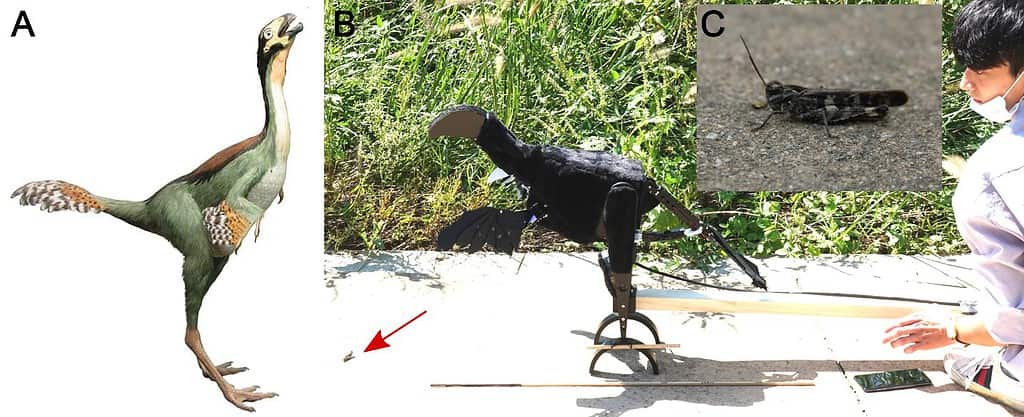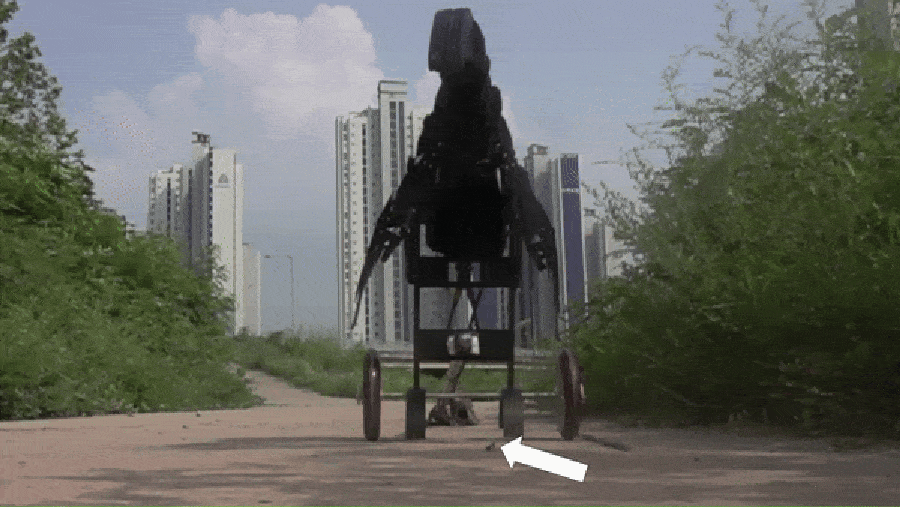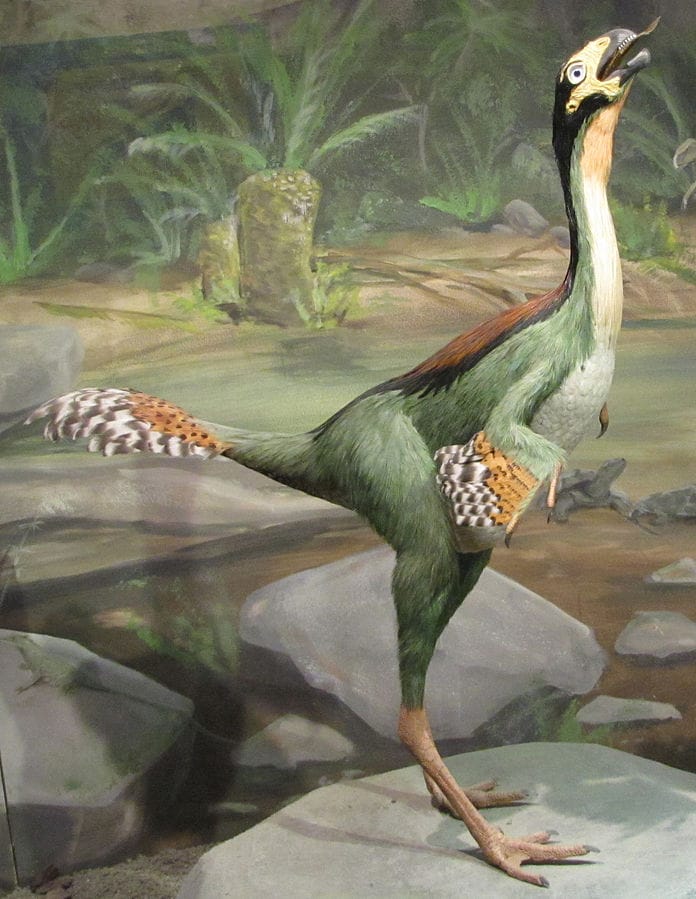
The evolution of birds from dinosaurs is as fascinating as it is mysterious. Scientists have always looked to feathered dinosaurs, specifically a group known as Pennaraptorans that roamed the Earth during the Jurassic Period, for clues as to how exactly this transition took place.
These creatures sported primitive feather structures called ‘proto-wings’ and feathered tails. While these proto-wings were too small for flight, their exact function has puzzled scientists for years. Now, researchers think they know the purpose of these appendages — and it was all done with the help of a custom-built robot. It might look goofy, but it got the job done.


Wings for scaring prey rather than flight
The international team of field biologists, paleontologists, and roboticists suggests that the’ flush-pursue hypothesis’ can explain these early flightless dinosaur wings. This hypothesis was first proposed 50 years ago by American paleontologist John Harold Ostrom and suggests that small, feathered dinosaurs used their proto-wings and tails akin to certain modern birds.
In flush-pursue hunting, creatures employing visual displays to startle and then chase down their prey. A hiding insect will be scared out of their hiding spot in an attempt to escape, thus revealing its location for capture. In the case of a grasshopper, the bird may snatch it right out of the air.
The roots of this hypothesis can be traced to extensive ornithological studies on insectivorous birds, such as the Painted redstart, the Slate-throated whitestart, and the Spectacled whitestart. These studies showed that birds with contrasting plumage patterns can trigger flee reactions in prey, thereby increasing their hunting efficiency. The hypothesis also draws on neurobiological research, suggesting that specific neurons in insects react to these startling displays.
To test this theory, a robot named ‘Robopteryx’ was crafted, simulating the movements of ancient dinosaurs like Caudipteryx. Caudipteryx stood out for its distinctive features. It had a long, bony tail, a trait typical of non-avian dinosaurs. But what set it apart were its feathers. Caudipteryx, whose name means “tail feather”, had symmetrical, vaned feathers on its arms and tail — a very bird-like characteristic despite being unable to fly.


Robot dinosaur on the hunt
Robopteryx is equipped with nine motors, designed to mimic the limb and tail movements of ground-foraging birds like the greater roadrunner and the rufous-tailed scrub robin. The project was led by paleontologist and anatomical expert Minyoung Son from the University of Minnesota.
Experiments with this robot revealed that the presence of proto-wings and tail feathers significantly increased the likelihood of grasshoppers fleeing — a response likely mirrored in the ancient prey of Pennaraptoran dinosaurs. This effect was especially amplified if these dummy wings had white patches, as opposed to plain black ones. Furthermore, the presence of tail feathers, particularly larger ones, also increased the likelihood of grasshoppers fleeing.
The team also examined how simple neural circuits in the grasshoppers, crucial for escape responses, reacted to these bird-like predators. They found heightened neuron activity in response to the animations with proto-wings.
“I created computer animations imitating the hypothetical displays by Caudipteryx and presented them to grasshoppers in the laboratory,” explains co-author Jinseok Park. “I used easily available inexpensive equipment to record responses of neurons.”
The implications of this study are profound. It suggests that the evolution of feathers in dinosaurs was not just a precursor to flight, but an adaptation for more effective hunting.
While we cannot turn back time to witness these ancient creatures in action, studies like these offer a tantalizing glimpse into their world. It showcases the intricate interplay of evolution, where even the smallest adaptation can open a new chapter in the saga of life on Earth.
The findings appeared in the journal Scientific Reports.

